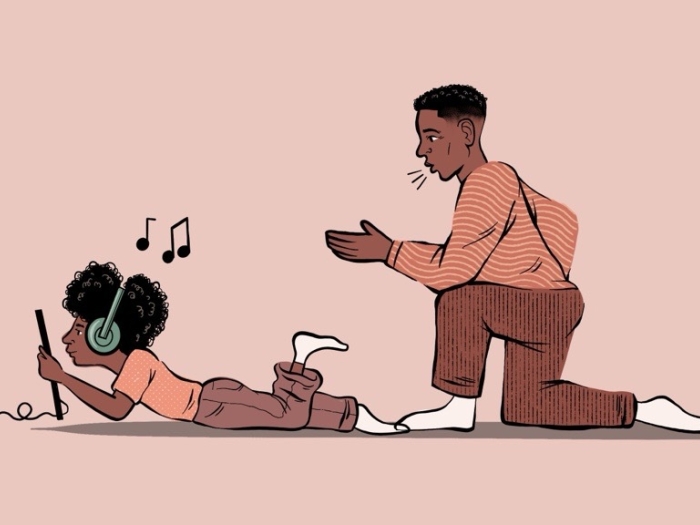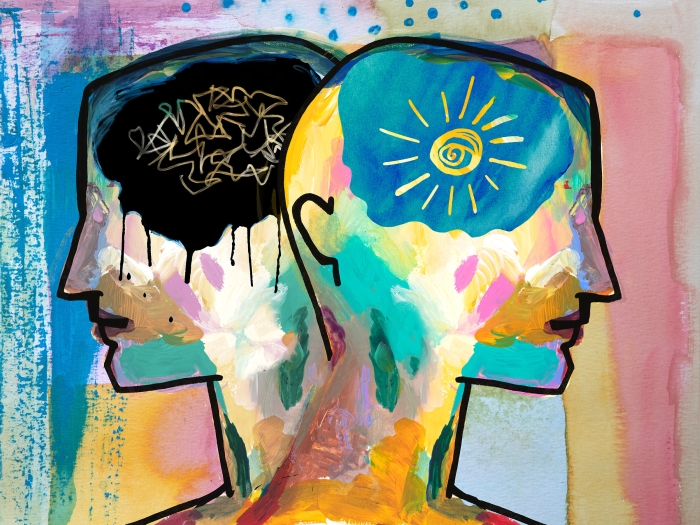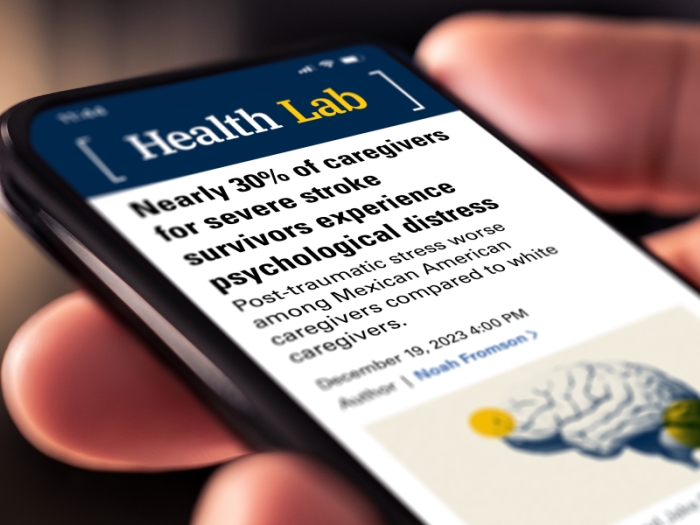Whether you’re a novice, professional athlete or in between, an expert shares the important health benefits of exercise.
5:00 AM
Author |

These days, there's no shortage of information about the benefits of exercise, yet physical inactivity is the fastest-growing public health problem in the United States
In fact, nearly half of all U.S. adults do not meet the recommended daily allowance for physical activity and nearly one-third report doing less than 10 minutes of moderate-to-vigorous physical activity per week.
Yet, studies show that as little as 20 minutes of moderate-intensity activity each day can help keep you healthy, including lowering your risk of cardiovascular disease, stroke and cancer, among other benefits.
These studies support the premise behind "Exercise Is Medicine," an initiative of the American College of Sports Medicine based on a concept that has existed since ancient civilization.
MORE FROM MICHIGAN: Sign up for our weekly newsletter
Hippocrates (460-370 BCE), known as the Father of Scientific Medicine, is said to be the first physician to prescribe exercise to his patients. The Greek physician wrote two books emphasizing the importance of exercise and diet, stating, "… eating alone will not keep a man well; he must also take exercise. For food and exercise ... work together to produce health."
Sushruta (6th or 7th Century BCE), an ancient Indian physician, prescribed moderate daily exercise to his patients and Chinese physician Hua Tuo (c. 140-208 AD) believed chronic illnesses were partly due to a lack of physical activity, proposing regular exercise as a remedy.
Throughout the centuries, many more health professionals have upheld the belief that exercise is medicine.
Kristen Schuyten, D.P.T., a physical therapy clinical specialist at University of Michigan Health MedSport, is one of them.
"Staying active reduces the risk of disease and can improve the quality and longevity of your life. Even if you have a family history of some type of disease, activity can help minimize your risk. And active individuals who undergo surgery often bounce back more quickly than those who are inactive."
Weighing the benefits
According to the Exercise Is Medicine organization, regular physical activity can:
-
Reduce mortality and the risk of recurrent breast cancer by approximately 50%
-
Lower the risk of colon cancer by over 60%
-
Reduce the risk of developing of Alzheimer's disease by approximately 40%
-
Reduce the incidence of heart disease and high blood pressure by approximately 40%
-
Lower the risk of stroke by 27%
-
Lower the risk of developing type II diabetes by 58%
But, exercise looks different to everyone, says Schuyten, who works with a variety of patients – from those wanting to begin a safe exercise program to competitive athletes and performing artists (think dancers, figure skaters and gymnasts) who want to keep functioning at a high level.
"The best thing is to begin being active at a young age and make it a lifelong commitment," said Schuyten, "but it's never too late to start."
Whatever form of activity you enjoy and whatever your level of fitness — novice, weekend warrior, competitive athlete or performing artist — Schuyten shares important information.
Movement is power
Physical activity is considered any type of activity that involves moving the body such as housework, stair climbing or gardening. Exercise is a type of structured movement focused on cardio or aerobic activity that gets you breathing hard and your heart beating fast. This includes such things such as running, brisk walking, biking, hiking and swimming, along with strength training.
"Both forms of movement can enhance your health," said Schuyten. But just as important as the activity or exercise is knowing how to keep yourself from injury. The key, she says, is to make sure an exercise program is right for you in order to avoid injury. This might mean consulting with an exercise expert before starting a program.
"Our goal at MedSport is to help individuals with any type of exercise program, and that includes preventing injury or helping with rehabilitation following an injury or a surgical procedure."
Making a plan
•Low impact. For the average individual just starting out, Schuyten recommends low impact activities such as an elliptical machine, hiking or walking 2 to 3 times a week. Then, increasing cardio and light strength training activities slowly to make sure your body can tolerate it.
•Strength training. "Light strength training can start with lifting your own body weight, including squats, lunges and core activities, every other day," said Schuyten. "These tend to be good first steps. Then, work up to adding light weights (2 or 3 lbs.) or exercise bands that are easy on the joints. Use your off day to assess how your body handles the activity and make adjustments as needed."
•Cardio. Running, cycling, stair climbing or any activity that challenges your heart and lungs can be done on a daily basis, says Schuyten, who warns against "fad exercises" that require considerable impact or quick, sudden movements.
"Your body might not be prepared for this type of workout. Ramp up slowly to help your body become acclimated to more strenuous exercises."
• Stretching. Schuyten and her team stress the importance of stretching, which often gets ignored by both new and experienced athletes.
"Warming your body up with dynamic stretches and light cardio gets the muscles ready for exercise, and to avoid muscle tightness and stress on the body, variety is important. If all we do is one type of exercise, the result can be tightness or soreness in other areas of the body."
Avoiding injury
Even avid athletes and performing artists are at risk of injury, says Schuyten. As the MedSport Performing Arts Rehabilitation Coordinator, many of her patients are active, but not always activating the right muscles to perform high-level activities.
"This is where adding different exercises — outside of your normal movement patterns — can help, but performing with proper body mechanics is key, as well," said Schuyten. "Your form may need work, or if you have a past injury that was not fully resolved and you get back to activity, even low activity, your previous symptoms may return."
Professionals play a critical role
Schuyten promotes seeing a primary care physician, strengthening professional or physical therapist to make sure you're on the right path.
"We work with patients who may have areas of tightness, for example, in their neck, low back or hamstrings, that need to be addressed before getting into a full exercise program."
In fact, the U-M Health MedSport experts share their expertise with physicians, physician assistants, physical therapists, athletic trainers and nurses, among other professionals, through an annual MedSport continuing education symposium.
Staying active reduces the risk of disease and can improve the quality and longevity of your life.Kristen Schuyten, D.P.T
As educators, researchers and leaders in the field, MedSport experts focus on health issues and concerns for athletes of all levels and ages, including exercise and health, injury prevention education and rehabilitation.
Past symposiums have addressed topics such as Exercise After Concussion, Benefits of Physical Activity on Prevention and Treatment of Youth Depression, Prenatal and Postpartum Exercise Prescription, and Triathlete: From Start to Finish, just to name a few.
Listen to your body
The MedSport team tracks patient progress, including how their strength, tolerance and motion are improving. "
It helps to motivate them," Schuyten said. Once rehab is complete, patients are encouraged to continue tracking their progress. "Whether they use a smart watch or pencil and paper, it gives them motivation to continue therapy and to keep pushing toward their goals."
Schuyten says the overall goal at MedSport is to help patients manage their therapy so they're able to continue good practices on their own.
"We give patients the tools to be able to self-treat and to have more body awareness so they understand any symptoms they may experience. We want to get them on a path to be their own advocate and to know what their body needs. And, if necessary, to get treatment."
For first-time athletes and beyond, Schuyten wants one important message to be clear:
"Listen to your body and what it is able to tolerate. If you need a rest day, take one, knowing that rest and recovery are necessary in this process. A little R&R goes a long way in easing you back into exercise and making it a permanent part of your lifestyle."
Like Podcasts? Add the Michigan Medicine News Break on iTunes or anywhere you listen to podcasts.

Explore a variety of healthcare news & stories by visiting the Health Lab home page for more articles.

Department of Communication at Michigan Medicine
Want top health & research news weekly? Sign up for Health Lab’s newsletters today!





